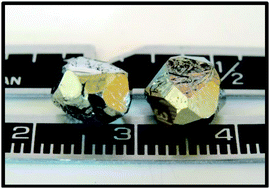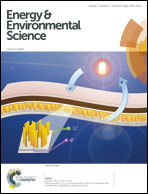An inversion layer at the surface of n-type iron pyrite†
Abstract
Numerical modeling of Hall effect data is used to demonstrate the existence of a conductive inversion layer at the surface of high-quality n-type single crystals of iron pyrite (cubic FeS2) grown by a flux technique. The presence of the inversion layer is corroborated by Hall measurements as a function of crystal thickness and photoemission spectroscopy. This hole-rich surface layer may explain both the low photovoltage of pyrite solar cells and the widely-observed high p-type conductivity of polycrystalline pyrite thin films that have together perplexed researchers for the past thirty years. We find that the thickness and conductivity of the inversion layer can be modified by mechanical and chemical treatments of the pyrite surface, suggesting that it may be possible to eliminate this hole-rich layer by passivating surface states and subsurface defects. Furthermore, modeling of the high-temperature electrical conductivity shows that the electronic band gap is 0.80 ± 0.05 eV at room temperature (compared to 0.94 eV according to optical transmission data), confirming that photovoltages of ∼500 mV should be attainable from pyrite under solar illumination.


 Please wait while we load your content...
Please wait while we load your content...